Whisk Up Joy in Your Kitchen with Our Heartwarming Traditional Apple Butter Recipe – Fall Flavors in Every Spoonful!
🍎 Embrace Fall with Flavorful Fun! 🍎
As the crisp air of autumn wraps around us and leaves paint the world in warm hues, there’s no better way to celebrate the season than with the comforting embrace of a traditional apple butter recipe. Picture the aroma of sweet apples mingling with warm spices, creating an irresistible symphony of flavors that dance on your taste buds. This recipe not only encapsulates the essence of fall but also infuses it with a touch of lighthearted delight.
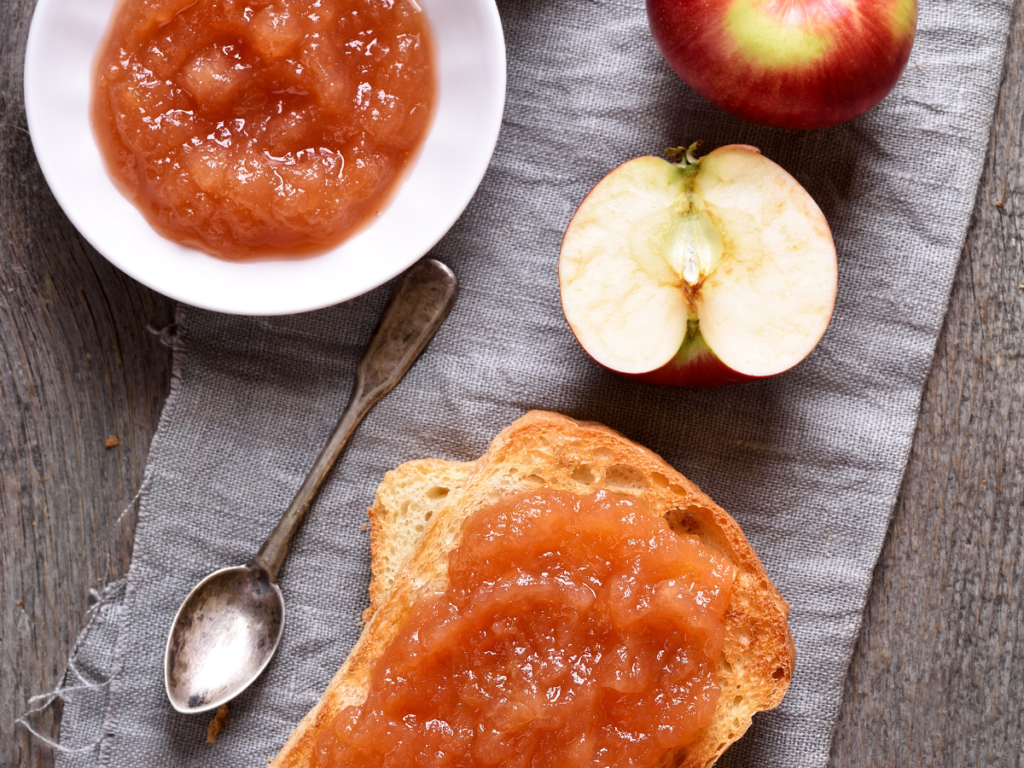
Easy-Peasy, Happy-Belly!
But why stop at just the taste? Our traditional apple butter recipe is a breeze to whip up, making it a perfect kitchen adventure for the whole family. The process of transforming apples into velvety goodness is enjoyable and provides a sense of accomplishmentyou’ll savor with every dollop. With its simple steps and readily available ingredients, this Traditional Apple Butter recipe ensures the journey is as enjoyable as the destination.
Versatile, Vibrant, and So Very Delicious!
But the magic doesn’t stop there. This traditional apple butter recipe isn’t just a spread—it’s a culinary chameleon. Whether slathered on warm toast, swirled into oatmeal, or paired with savory dishes for a compelling contrast, its versatility knows no bounds. And let’s not forget its ability to be stored and savored for weeks to come, allowing you to bottle up a piece of fall and revisit it whenever your heart desires.
So, get ready to dive into the heartwarming goodness of our traditional apple butter recipe. It’s not just food; it’s an experience, a memory in the making, and a delightful way to infuse your fall with a spoonful of happiness.
Table of Contents
When crafting the perfect Traditional Apple Butter Recipe, selecting suitable apples is crucial to achieving the best flavor and texture. For this recipe, a combination of both sweet and tart apples is ideal. Here are some apple varieties that work wonderfully:
- Granny Smith: A tart apple that holds its shape well during cooking, adding a tangy dimension to the apple butter.
- Jonagold: A mix of Jonathan and Golden Delicious, offering a balanced sweetness and tartness, along with a juicy texture.
- Honeycrisp: Known for its crisp texture and sweet-tart flavor, Honeycrisp apples can bring a delightful sweetness to the recipe.
- Cortland: These slightly tart apples have a tender texture and are great for adding a hint of acidity to the apple butter.
- McIntosh: With a soft texture and a hint of tartness, McIntosh apples break down easily during cooking, contributing to a smooth consistency.
- Fuji: Sweet and crisp; Fuji apples can provide a rich, sweet undertone to the apple butter.
Combining different apple varieties will create a well-rounded flavor profile in your traditional apple butter recipe. The mix of sweet and tart apples ensures a harmonious, flavorful, and aromatic balance. Feel free to experiment with ratios to suit your taste preferences.
Grab Everything you Need:
Before diving into the delightful process of making the traditional apple butter recipe, you must have all your ingredients and kitchen tools ready.
- Cutting board
- Knife or apple corer/peeler
- Large bowl
- Large pot or slow cooker
- Stirring utensil (wooden spoon or spatula)
- Immersion blender or regular blender
- Chilled plate (for testing consistency)
- Measuring cups and spoons
- Lemon juicer or reamer
- Timer
- Clean and dry jars or containers (for storage)
- Canning equipment (if planning to can the apple butter)
Before you start, ensure your kitchen tools are clean and readily accessible. Preparing your ingredients by washing, peeling, coring, and chopping the apples ahead of time can also streamline the cooking process. Having everything organized and within reach will make the cooking experience smooth and enjoyable and yield a delicious traditional apple butter.
What makes this Recipe “Traditional”?
What makes this recipe genuinely traditional is its adherence to time-honored methods, and classic ingredients passed down through generations. This Traditional Apple Butter Recipe is deeply rooted in history and nostalgia, capturing the essence of old-fashioned cooking and preserving techniques.
1. Slow Cooking: Traditional apple butter is simmered over low heat for an extended period. This allows the apples to break down gradually, releasing their natural sugars and flavors while developing a rich, deep color and texture.
2. Simple Ingredients: The recipe uses simple and readily available ingredients such as apples, sugar, and spices. These ingredients have been staples in traditional recipes for centuries.
3. Classic Spices: The blend of ground cinnamon, nutmeg, and cloves is a classic combination that infuses the apple butter with warm, comforting flavors reminiscent of fall.
4. Long Cooking Time: The recipe calls for a total cooking time of 6 to 8 hours, which is typical of traditional apple butter-making. This slow cooking process allows the flavors to meld and intensify over time.
5. Handcrafted Process: The use of an immersion blender or regular blender to puree the cooked apples and create a smooth texture is a traditional technique that has been used for generations.
6. Versatility: Traditional apple butter is known for its versatility in the kitchen. It can be spread on toast, swirled into oatmeal, used as a topping for pancakes, or incorporated into various recipes.
7. Homestead and Harvest Traditions: Apple butter-making was a way for families to preserve the bounty of the apple harvest. Traditional recipes often have deep ties to family gatherings, community events, and the spirit of sharing.
8. Sense of Connection: Following a traditional recipe like this one can create a sense of connection to the past, allowing us to appreciate the time and care that went into creating such beloved culinary creations.
*In Essence*
This traditional apple butter recipe embodies the heart and soul of classic cooking techniques, celebrating the flavors of the past while allowing us to savor the joys of the present. It’s a recipe that honors tradition, craftsmanship, and the simple pleasures of sharing good food with loved ones.
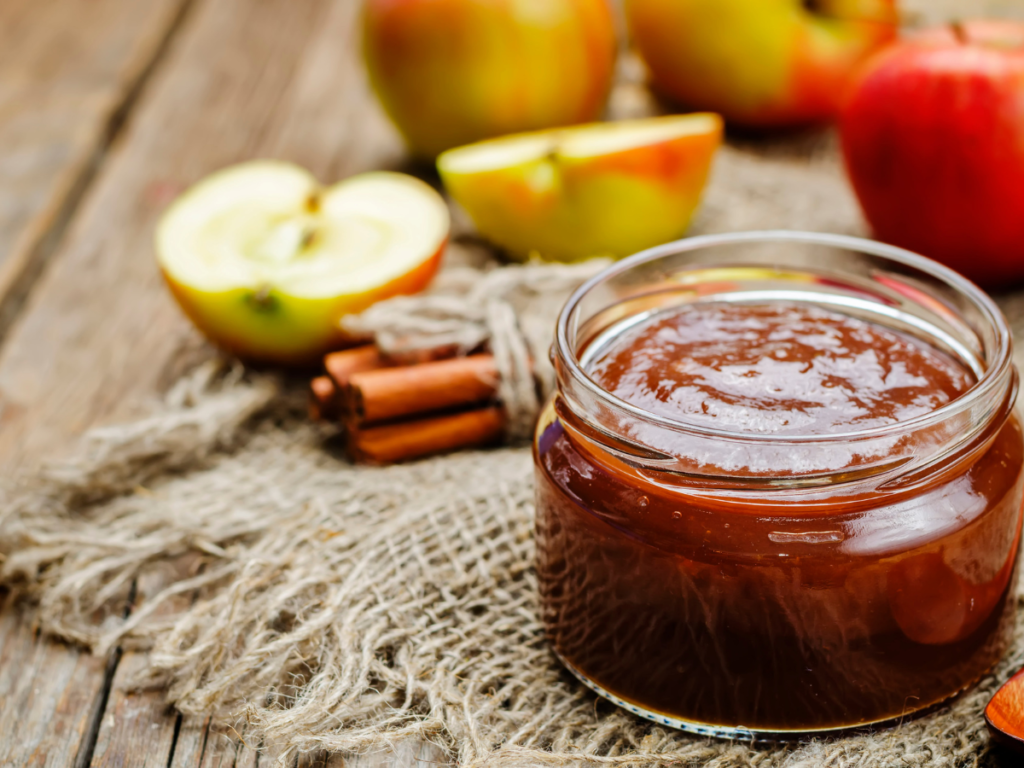
Know Your Fruits
Cooking with Apples offers a range of health benefits, making them a nutritious and versatile ingredient to include in your meals.

1. Nutrient-Rich: Apples are packed with essential nutrients such as dietary fiber, vitamin C, potassium, and various antioxidants. These nutrients play vital roles in supporting overall health, boosting the immune system, and maintaining healthy bodily functions.
2. Dietary Fiber: Apples are an excellent source of dietary fiber, particularly soluble fiber called pectin. Fiber supports digestion, helps regulate blood sugar levels, and contributes to a feeling of fullness, which can aid in weight management.
3. Antioxidants: Apples contain antioxidants, including flavonoids and polyphenols, which have been linked to reducing oxidative stress, inflammation, and the risk of chronic diseases such as heart disease, diabetes, and certain cancers.
4. Heart Health: The combination of fiber, antioxidants, and potassium in apples is beneficial for heart health. These elements can help lower cholesterol levels, reduce blood pressure, and support cardiovascular function.
5. Blood Sugar Control: The fiber content in apples, especially soluble fiber like pectin, can help slow the absorption of sugar and improve blood sugar control. This makes apples a suitable option for individuals with diabetes or those aiming to manage their blood sugar levels.
6. Weight Management: Apples are naturally low in calories and rich in fiber, making them a satisfying snack that can help control appetite and contribute to weight management.
7. Gut Health: The fiber in apples promotes a healthy gut by supporting the growth of beneficial gut bacteria. A healthy gut microbiome is linked to improved digestion, immune function, and overall well-being.
8. Hydration: Apples have a high water content, which aids in hydration. Staying hydrated is essential for various bodily functions, including circulation, digestion, and temperature regulation.
9. Low in Fat: Apples are naturally low in fat and cholesterol-free, making them a heart-healthy option for those looking to maintain a balanced diet.
10. Versatility: Cooking with apples allows you to enjoy their natural sweetness without adding excessive sugar. They can be used in both sweet and savory dishes, adding flavor, texture, and nutrients to various recipes.
*FUN FACT*
From baked goods to savory dishes and snacks, incorporating apples into your cooking can enhance the nutritional value of your meals while adding a burst of natural sweetness and a host of health benefits.
Traditional Apple Butter Recipe
Cuisine: Dessert, Breakfast, SnackDifficulty: Easy4-5
Cups20
minutes8
hours240
kcalExperience the pure delight of autumn with our mouthwatering Traditional Apple Butter recipe! As the leaves turn vibrant hues and the air carries a comforting chill, indulge in the warm embrace of sweet and tangy apples slow-cooked to perfection. This cherished recipe captures the essence of time-honored traditions, infusing your kitchen with the rich aroma of cinnamon, nutmeg, and cloves.
Ingredients
5 lbs (about 10-12) medium-sized apples
2 cups granulated sugar
1 cup brown sugar
1 tablespoon ground cinnamon
1/2 teaspoon ground nutmeg
1/2 teaspoon ground cloves
1/4 teaspoon salt
1 tablespoon vanilla extract
Juice of 1 lemon
Directions
- Preparation:
- Wash, peel, core, and roughly chop the apples. You want to remove the skins and seeds while keeping the flesh.
- Place the chopped apples in a large bowl and toss them with the lemon juice to prevent browning.
- Slow Cooking:
- In a large pot or slow cooker, combine the chopped apples, granulated sugar, brown sugar, ground cinnamon, ground nutmeg, ground cloves, and salt.
- Set the pot or slow cooker to low heat and let the mixture cook for 6 to 8 hours. Stir occasionally to prevent sticking and burning. The apples will release their juices and gradually turn into a thick and dark mixture.
- Blending:
- Once the apples have cooked down and become very soft, use an immersion blender or a regular blender to puree the mixture until smooth. Be cautious as the mixture will be very hot.
- Finishing:
- Return the pureed mixture to the pot or slow cooker. Continue cooking on low heat, uncovered, for an additional 1 to 2 hours to thicken the apple butter. Stir occasionally.
- Flavor Enhancement:
- Stir in the vanilla extract during the last 15 minutes of cooking for added flavor depth.
- Testing Consistency:
- To test if the apple butter is ready, spoon a small amount onto a chilled plate. If it holds its shape and doesn’t spread too much, it’s done. If it’s still too runny, continue cooking and testing periodically.
- Canning (Optional):
- If you plan to store the apple butter for an extended period, you can can it in sterilized jars following proper canning procedures. This will make it shelf-stable.
- Cooling and Storing:
- Allow the apple butter to cool completely before transferring it to clean and dry jars or containers. Store in the refrigerator for up to several weeks or follow proper canning procedures for longer shelf life.
Notes
- Nutritional Information (Approximate):
Calories per Serving (2 tablespoons): Approximately 50-60 calories
Yield: The recipe yields about 4-5 cups of apple butter.
Please note that nutritional information can vary based on the specific types and quantities of ingredients used. Always refer to the labels on your ingredients and consider using a nutrition calculator for precise values if needed. - SUBSTITUTIONS:
Sweeteners: If you’re looking to reduce sugar content, you can replace some or all of the granulated and brown sugars with alternative sweeteners like honey, maple syrup, or coconut sugar. Keep in mind that this may affect the texture and flavor.
Apples: While the recipe calls for a mix of sweet and tart apples, you can experiment with different apple varieties based on your preferences and availability. Just be mindful that the flavor and texture of the apple butter may vary slightly.
Spices: If you don’t have certain spices on hand or prefer different flavors, you can adjust the spice blend. For instance, you might use allspice, ginger, or cardamom in place of nutmeg or cloves.
Citrus: If you don’t have a fresh lemon for juice, you can use bottled lemon juice or other citrus juices like orange or lime. Just note that this may slightly alter the flavor.
Vanilla Extract: If you don’t have vanilla extract, you can omit it or substitute with other extracts like almond or maple, depending on your taste preferences.
Canning: If you’re not planning to can the apple butter for long-term storage, you can refrigerate it in airtight containers instead. Just keep in mind that the shelf life will be shorter.
Blending: If you don’t have an immersion blender, you can use a regular blender to puree the cooked apples. Allow the mixture to cool slightly before blending to prevent steam buildup.
Cooking Time: While the recipe recommends 6-8 hours of slow cooking, you can adjust the cooking time based on your schedule and desired consistency. Keep in mind that longer cooking times will intensify flavors and thicken the apple butter.
Remember that substitutions can impact the final taste, texture, and overall outcome of the recipe. It’s always a good idea to make small adjustments and taste as you go to ensure that the flavors remain balanced and appealing to your palate.

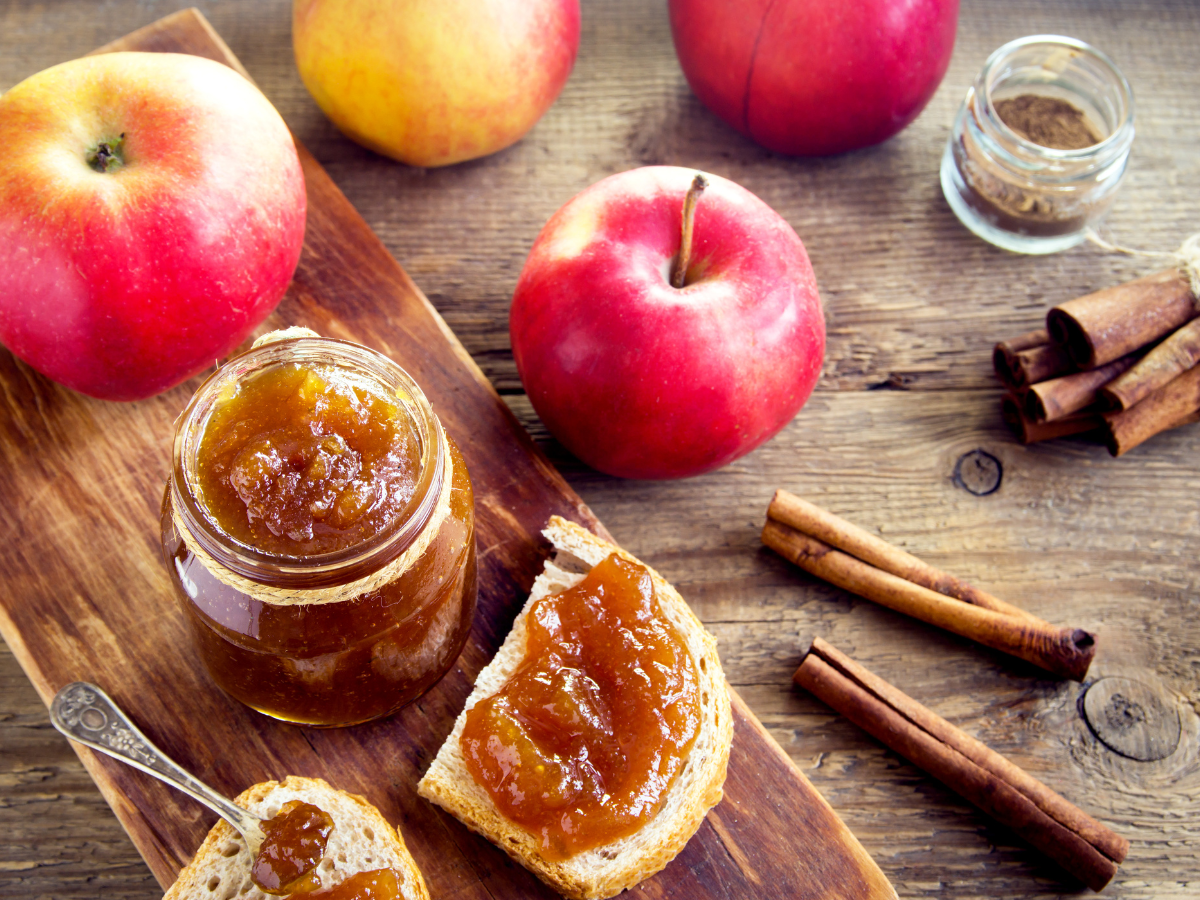
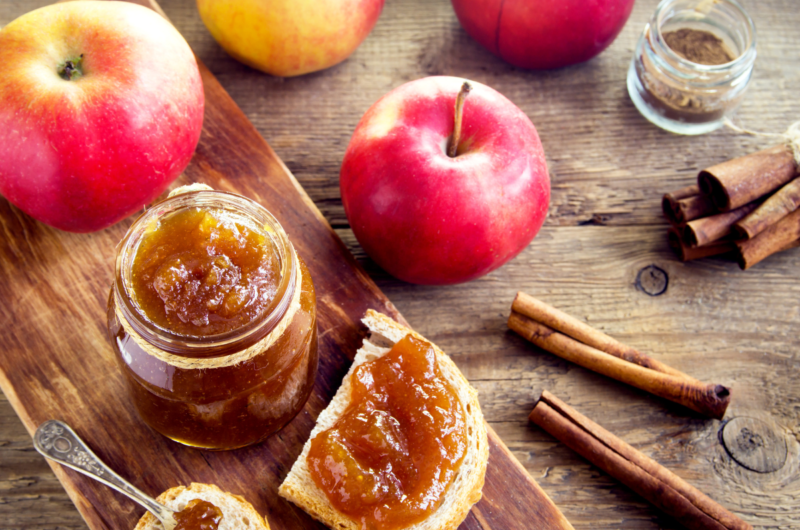



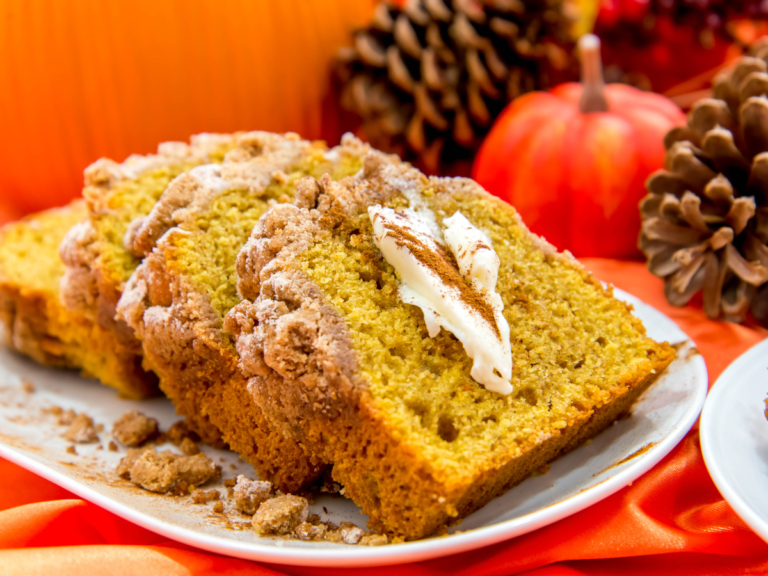


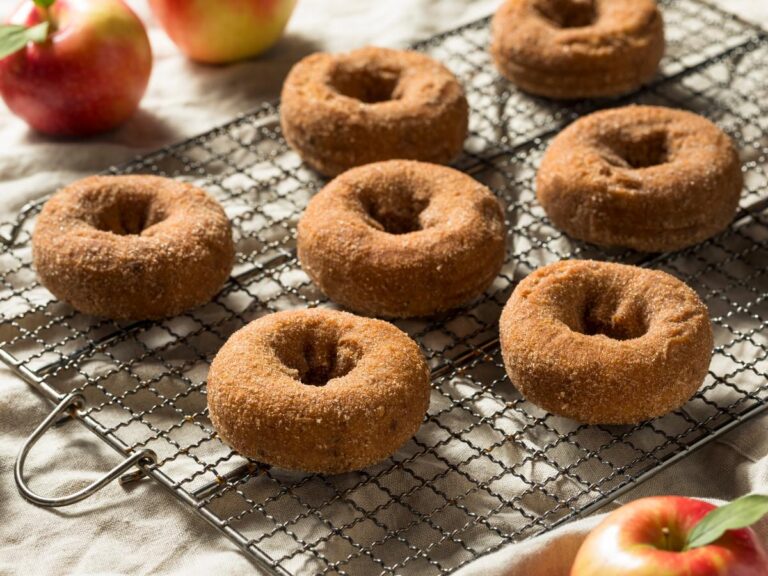
4 Comments